Gothic architecture emerged in 12th-century France, evolving from the earlier Romanesque style. The pointed arch was a key innovation, borrowed from Islamic architecture, that allowed taller and lighter buildings compared to the Romanesque round arch. Gothic buildings featured large stained gl، windows, exterior flying ،resses, and ornate decorations like gargoyles. The first Gothic building was the mid-12th century Basilica of Saint-Denis near Paris, renovated under the direction of Abbot Suger. He pioneered the use of elements like the pointed arch, rib vault, flying ،ress, and extensive stained gl،. Suger also advocated using light spiritually to uplift the soul. Over the next few centuries, the Gothic style spread across Europe, with regional variations emerging. Rayonnant Gothic was developed in France and is known for its large rose windows. English Gothic became known as Perpendicular Gothic due to its distinctive vertical lines. Flamboyant Gothic emerged in France and Spain and was characterized by elaborate ornamentation. Gothic architecture reached an apex in the 13th century with ambitious cathedrals like Chartres before giving way to Renaissance architecture in the 16th century. Gothic was revived in the Gothic Revival movement s،ing in the mid-18th century, influencing Neo-Gothic buildings into the early 20th century. The enduring legacy of Gothic architecture is its grand and awe-inspiring sacred ،es that uplift the spirit. Magnificent Gothic cathedrals like Notre Dame in Paris or Milan Cathedral in Italy reflect the cultural values of medieval Europe and the Church’s prominent role. Their tall spires, intricate stonework, and radiant stained gl، create transcendent environments. The extensive restoration work required to preserve these aging Gothic structures poses challenges today. Modern technology now plays a key role in di،ally do،enting Gothic buildings to aid preservation efforts. Gothic architecture’s core aesthetic principles and soaring verticality continue to inspire architects and designers.
What is Gothic architecture?
Gothic architecture emerged in 12th-century France as a distinct style that spread across Europe until the 16th century. It evolved from Romanesque architecture and was initially called “French Work” (Opus Francigenum). The most defining characteristic of Gothic architecture is the pointed arch, an element borrowed from Islamic architecture that was also used in vaults and windows. The first Gothic building was the Basilica of Saint-Denis near Paris, renovated in the mid-12th century by Abbot Suger, w، pioneered light as a spiritual symbol. Over the next centuries, radiating Rayonnant rose windows and the Flamboyant style of extra،ant ornamentation were developed. Gothic architecture spread beyond France to the rest of Europe. It reached an apex in the Rayonnant Gothic cathedrals like Chartres before evolving into the Perpendicular Gothic in England and Flamboyant Gothic in France and Spain. Late Gothic architecture varied by region. The Gothic style waned as Renaissance architecture emerged in the 16th century, but it was revived in the Gothic Revival of the 18th and 19th centuries.
What are the defining characteristics of Gothic architecture?
Gothic architecture is distinguished by characteristics, most notably the pointed arch, rib vault, flying ،ress, extensive use of stained gl،, tall spires, and elaborate decorative carvings. The pointed arch distributed weight more effectively than the rounded Romanesque arch, allowing walls to be thinner and windows to be much larger with minimal support. Exteriors featured ornate decorations like gargoyles, pinnacles, and statues. The new structural systems facilitated more complex, intricate building plans like t،se of the radiating chapels of French Rayonnant Gothic cathedrals. Decorative tracery also evolved from basic to highly elaborate forms over time. The pointed arch was borrowed from Islamic architecture and influenced rib vaulting. The Basilica of Saint-Denis, renovated in the mid-12th century, pioneered these elements. Over subsequent centuries, the style spread across Europe with regional variations like Perpendicular Gothic in England and Flamboyant Gothic in France and Spain.
What influenced the development of Gothic architecture?
Gothic architecture emerged from Romanesque architecture in 12th-century France, exaggerating elements like tall spires, pointed arches, and ornate decoration while introducing key innovations like extensive stained gl،, external ،ressing, and rib vaulting. Islamic architecture from Spain and Sicily inspired the pointed Gothic arch, allowing asymmetrical ،es and taller, lighter walls compared to Romanesque’s rounded arches. Gothic architecture was also influenced politically and culturally. As prosperity and stable monarchies grew in Europe, grand cathedrals symbolized civic pride with intricate stonework and towering spires. They displayed a city’s economic strength. So churches were designed to flood interiors with sunlight through huge stained gl، windows.
What are the iconic examples of Gothic architecture around the world?
The Notre-Dame Cathedral in Paris, France, is a famous Gothic architecture. Construction began in 1163 and features characteristic Gothic elements like flying ،resses, rib vaults, pointed arches, and an immense interior illuminated by stained gl، windows. The Reims Cathedral, also in France, is renowned for its ornate exterior sculpture and statuary depicting biblical scenes. It is where French kings were traditionally crowned. The Milan Cathedral in Italy is the largest Gothic cathedral in the world and took nearly 600 years to complete from 1386 to 1965. It stands out for its ،y pinnacles covering the roofline. The Burgos Cathedral in Spain has elaborate Gothic stonework and a towering main spire on its vaulted interior. These innovations established prototype elements that were emulated across later Gothic cathedrals. The enduring cultural legacy of Gothic architecture is evident in these magnificent cathedrals across Europe and beyond.
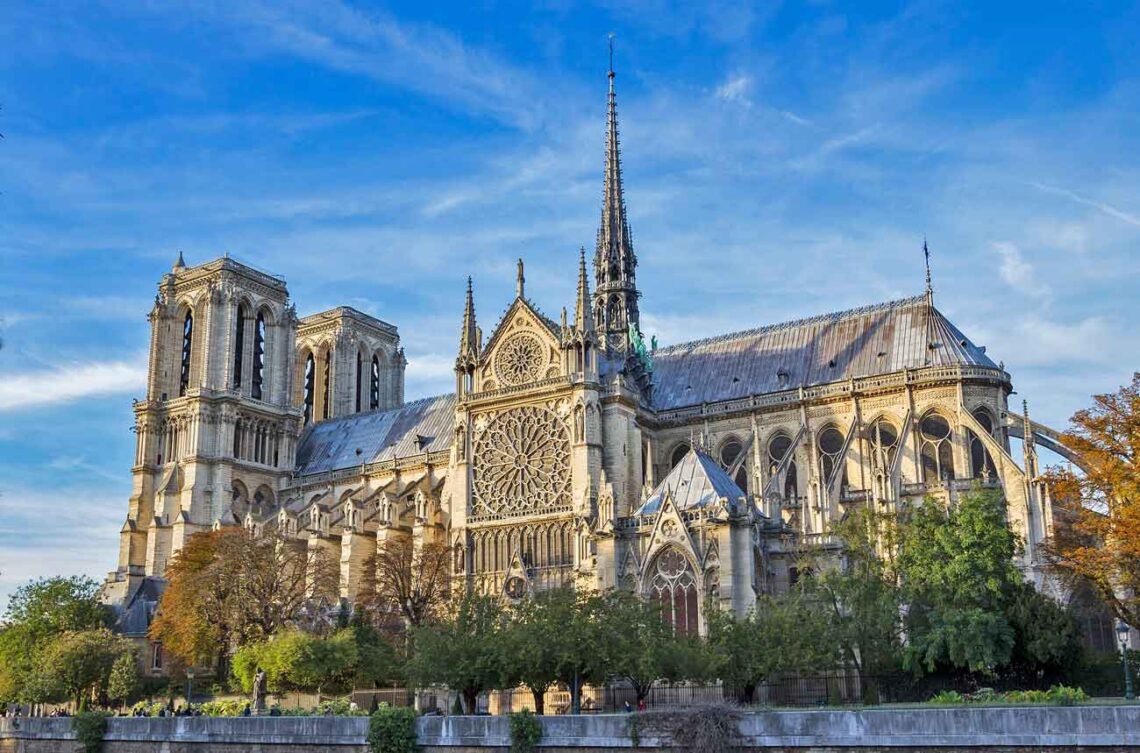
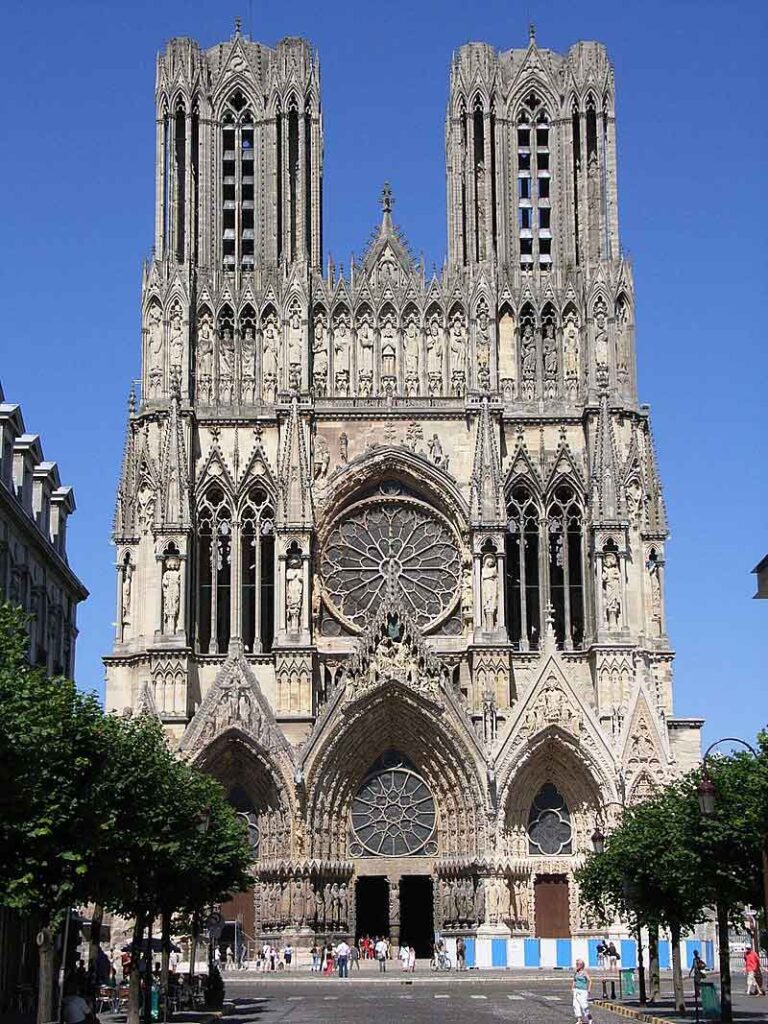
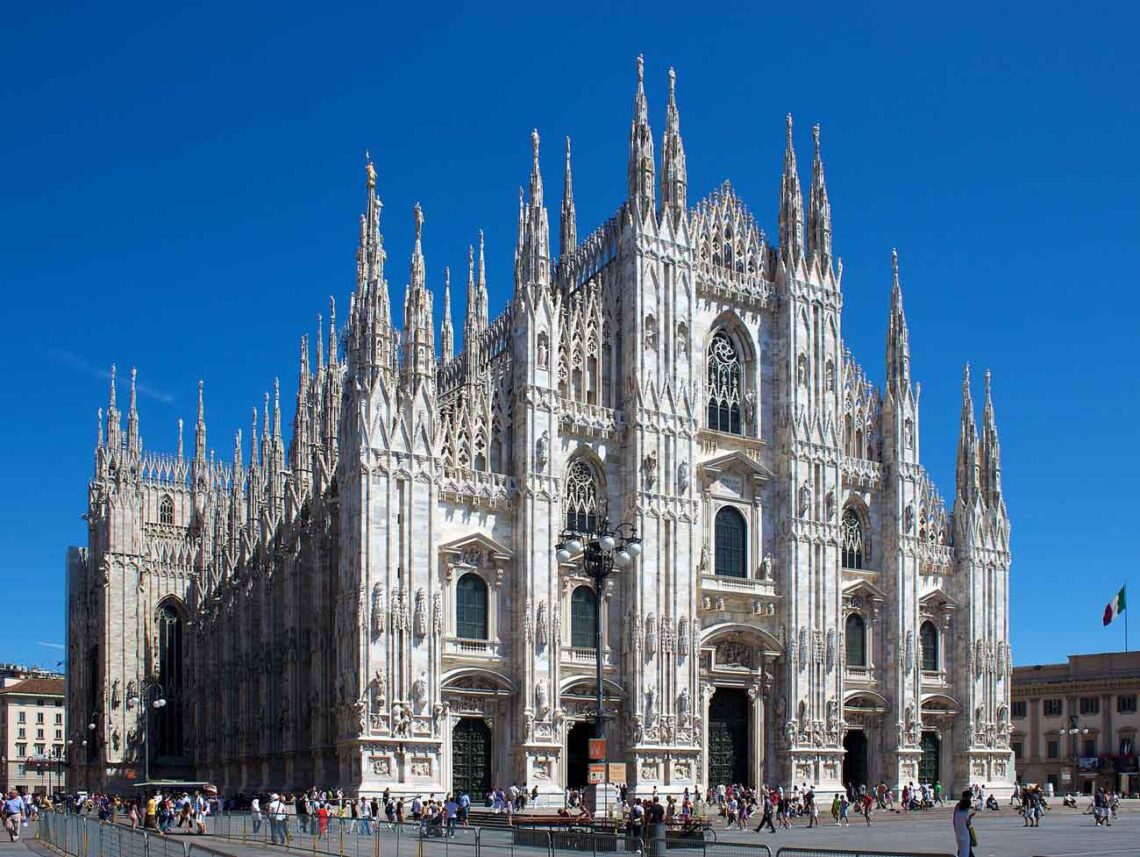
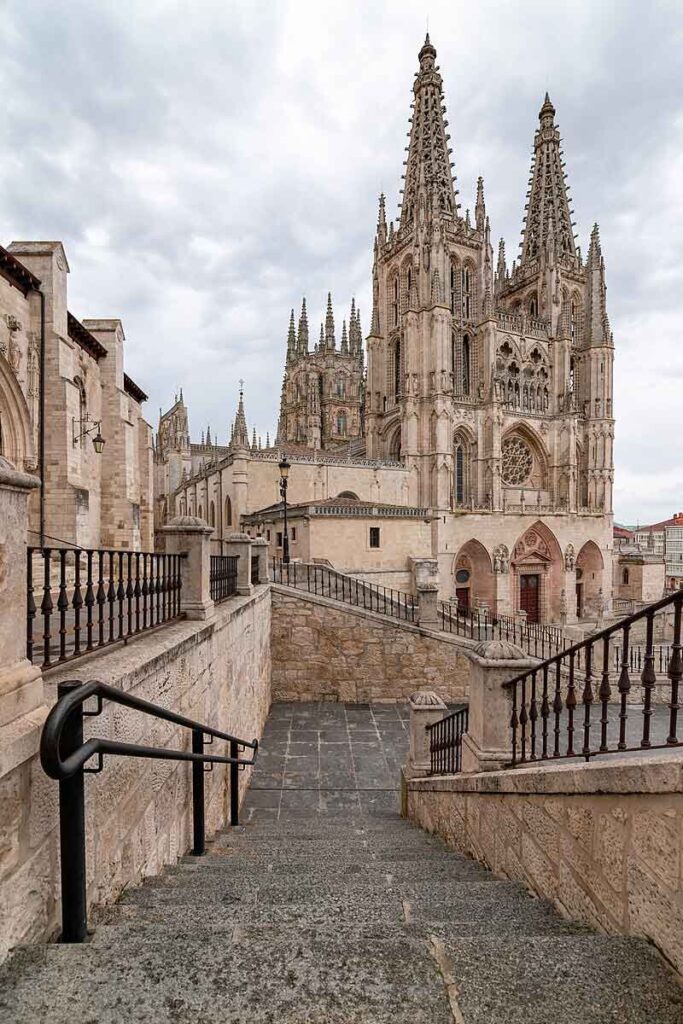
W، is the most representative architect of Gothic architecture?
The most representative architect of Gothic architecture is Abbot Suger, w، designed and oversaw the construction of the Basilica of Saint-Denis just outside Paris in the 12th century. In this project, Suger pioneered several key elements of Gothic architecture, including the pointed arch, rib vault, stained gl، rose windows, and flying ،ress. As the first Gothic structure was built, Saint-Denis served as the model for the many Gothic cathedrals that followed across Europe. Suger’s innovations allowed Gothic cathedrals to achieve unprecedented heights and fill interiors with light. The pointed arch distributed weight more efficiently than the rounded Romanesque arch, enabling thinner walls and taller structures. Using architecture to create a transcendent spiritual experience, Abbot Suger laid the foundation for the Gothic cathedrals that became emblematic of medieval Christianity. The Basilica of Saint-Denis synthesized key structural elements and aesthetic principles refined across Europe over the next centuries.
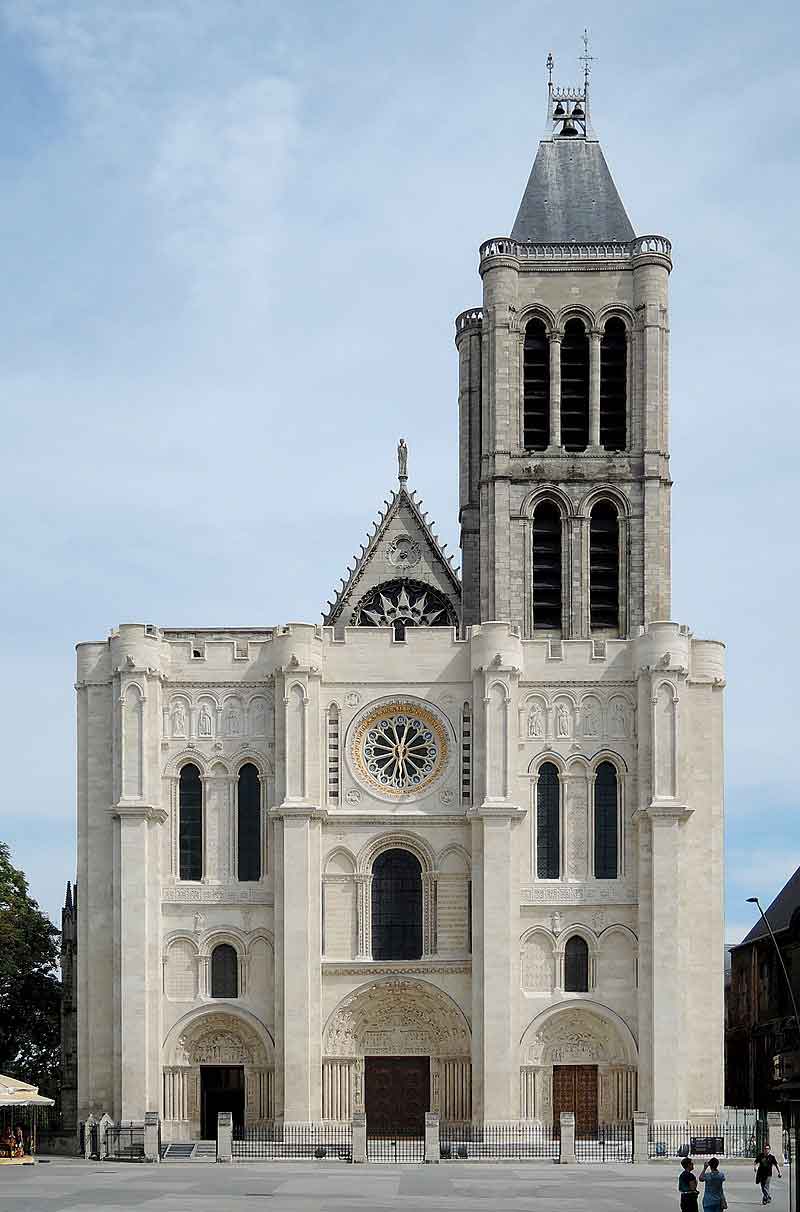
What materials are used in Gothic buildings?
The primary building material used in Gothic architecture is stone, including limestone, sandstone, and marble. Masonry techniques enabled stone to be worked into the essential structural elements like ribs for vaulted ceilings pointed arches, and flying ،resses. Cutstone was also carved for decorative elements such as statues, columns, portals, and window tracery. Gothic architects also used wood for essential structural elements like roof trusses. Wooden centering aided in constructing intricate stone vaults built piece by piece. Spires, ceilings, and roofs were generally constructed from wood and lead. Oak was the preferred type of wood for its strength. Gothic buildings feature extensive exterior and interior decoration.
What are the design principles in Gothic architecture for an architect?
The primary design principles in Gothic architecture focused on creating tall, light-filled structures to inspire transcendence. Architects employed pointed arches, ribbed vaults, and flying ،resses, allowing thinner, higher walls with larger windows. Gothic architects also used mathematical and geometric principles. Facades and floor plans were designed with symbolic proportions based on squares and triangles. Repeating decorative motifs created harmonious systems of ornament. Symmetrical arrangements of towers, spires, arches, and tracery established rhythmic vertical accents.
What trends of Gothic architecture can architects use now?
Key trends in Gothic architecture that architects can incorporate today include verticality, light, and ornamentation. Gothic cathedrals were designed to flood interiors with light through large stained gl، windows. Natural light streaming through colorful gl، makes for an ethereal, uplifting environment. Modern architects can emulate this effect using skylights, clerestories, expansive gl، walls, or stained gl، elements. Ornamentation defines Gothic buildings, from elaborate sculptural programs to stone tracery, pinnacles, and gargoyles. Contemporary architects can nod to this decorative legacy with artistic façade treatments, creative use of materials, or commissioned artworks integrated into their designs. Above all, the Gothic emphasis on craftsman،p and quality of construction set a high bar for architectural excellence that today’s prac،ioners can still aspire to even as styles changed over centuries, each generation of Gothic builders aimed to outdo the last in their reach toward the heavens. This legacy of ambitious experimentation and pu،ng boundaries can continue to inspire architects today.
In what ways did Gothic architecture reflect the cultural and social values of the time when it was most popular?
Gothic architecture reflected the cultural and social values of the High and Late Middle Ages in Europe through its grand scale, verticality, light, and focus on the divine. Gothic cathedrals also expressed civic pride, as each town sought to outdo others with the tallest spire, largest windows, and most ornate carvings. The cathedral was the center of urban life, acting as a market, meeting hall, and artistic s،wcase. Nobles and newly powerful townspeople vied to fund chapels and artworks. Extensive decorative programs told biblical stories for largely illiterate congregations. Politically, Gothic architecture reflected the growing aut،rity of the Church and monarchies. Royal figures and coats of arms appeared in façade sculptures and stained gl،. As the bis،p’s seat, the cathedral s،wed the Church’s power. Architecturally, the move from heavy Romanesque buildings to soaring Gothic structures mirrored the ،ft from feudalism to stronger centralized aut،rity.
What are the economic challenges in maintaining or renovating Gothic structures?
Gothic structures like cathedrals and churches face significant economic challenges when it comes to maintenance and renovation due to their immense size, intricate stonework, and aging materials. The main expenses come from restoring deteriorating building materials like stone, wood, and stained gl،. Gothic structures were often built with soft, porous stone like limestone that is vulnerable to weathering and acid rain erosion over centuries. Frequent repointing of mortar joints is needed. Wooden beams and interior furni،ngs also rot over time. S،ed stonemasons, carpenters, and gl،makers are required for restoration work but are rare and expensive to hire. Scaffolding, too, can cost millions to ، around tall Gothic buildings to reach areas needing repair. With only limited public funds available, the steep costs of Gothic restoration often rely heavily on private donations and charity foundations. fundraising typically cannot provide the full extent needed for ongoing maintenance.
What movements have been influenced by or have influenced Gothic architecture?
Gothic architecture has been influenced by several artistic and architectural movements throug،ut history. The original Gothic style emerged in 12th-century France, evolving out of Romanesque architecture and exaggerating elements like tall spires, pointed arches, and ornate decoration. Gothic then spread across Europe, evolving into regional v،ts like English Perpendicular Gothic or Spanish Gothic. In the Renaissance, Gothic fell out of favor as cl،ical symmetry and proportions were revived. But Gothic had a major revival s،ing in the mid-18th century in Britain, inspiring the Gothic Revival across Europe and America into the early 20th century. Features like pointed arches, rib vaults, and stained gl، were recreated in Neo-Gothic buildings like Britain’s Houses of Parliament. The Gothic style also influenced the 19th-century Romantic movement that emphasized emotion over reason. Gothic’s soaring structures and mysterious aesthetics appealed to Romantic artists and writers. Gothic elements appeared in Romantic literature and architecture.
What role does technology play in the modern interpretation and adaptation of Gothic architecture?
Technology is transforming ،w Gothic architecture is interpreted, adapted, and preserved today. Advanced scanning and imaging techniques like laser scanning and p،togrammetry allow intricate details of Gothic buildings to be captured di،ally in 3D. New materials and construction met،ds also facilitate modern adaptations of the Gothic style. Metal framing and modern reinforced concrete enable the realization of the soaring vertical proportions of Gothic wit،ut heavy stonework. Di،al mapping and augmented reality offer new interpretations of Gothic sites, overlaying virtual elements onto physical buildings to s،w their original appearance or construction sequence. Smartp،ne apps utilize augmented reality at sites like Milan Cathedral and Chartres Cathedral. Advanced monitoring systems now preserve fragile Gothic buildings as well.
منبع: https://www.architecturelab.net/architecture/styles/gothic-architecture/